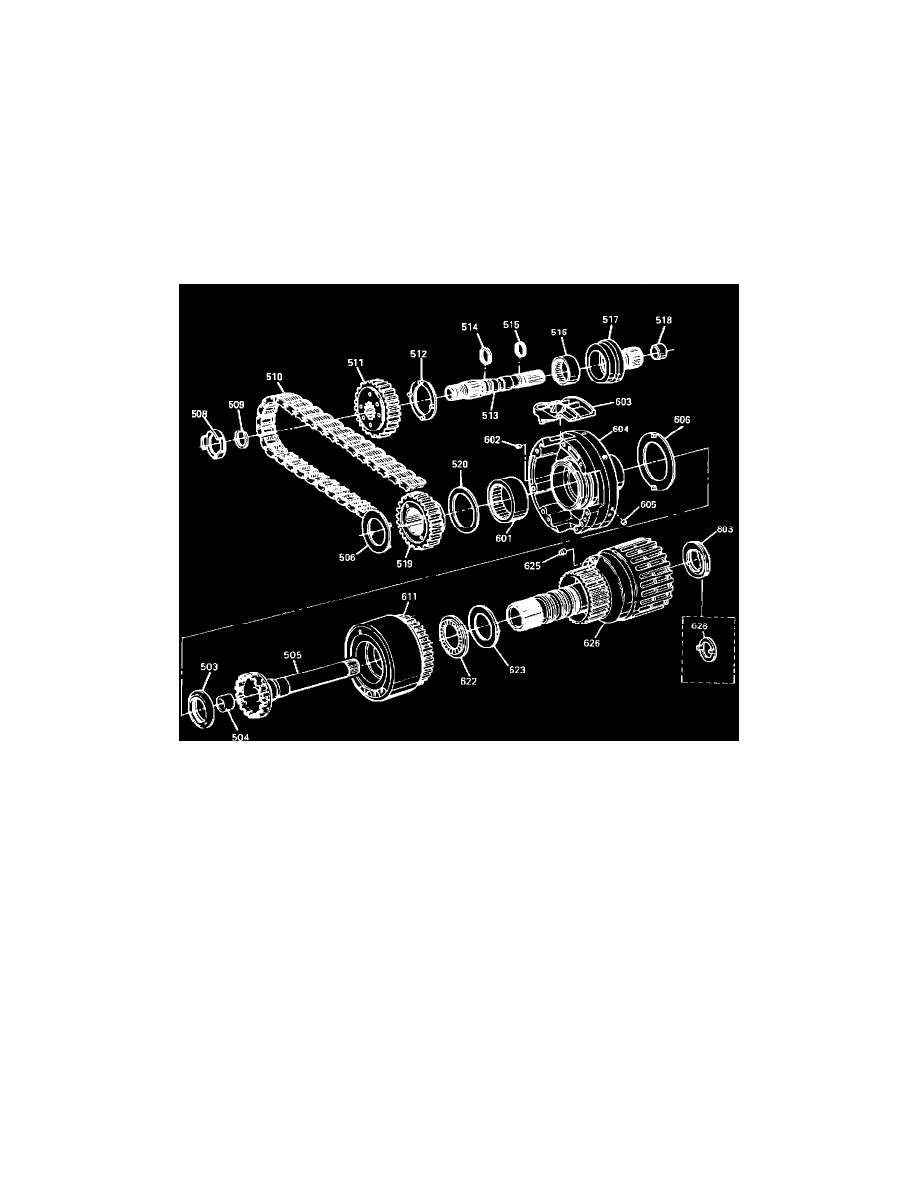Ninety-Eight V6-3800 3.8L (1989)

Drive Chain: All Technical Service Bulletins
A/T - Drive Link Noise in PARK/NEUTRAL Diagnosis
SUBJECT
DRIVE LINK NOISE-IN PARK/NEUTRAL, DIAGNOSIS,
MODELS/YEARS
ALL 1984-1991 MODELS EQUIPPED WITH HYDRA-
MATIC 4T60 OR 4T60-E
NUMBER:
91-T-22
CORP.REF.NO: 077127
DATE:
November 1990
SECTION:
4T60/4T60E
Drive Link Noise Related Components
This bulletin covers drive link diagnosis tips - all 1984-91 HYDRA-MATIC 4T60 and 4T60-E transaxles (see the illustration). Damaged drive link
components may exhibit one of the following conditions:
1.
A whine/whistle (that could sound like generator whine) or growling noise in Park and Neutral and stops when the vehicle is put in Drive or
Reverse (with the vehicle not moving). When the vehicle is driven, this whine or growling noise (the noise may not be noticeable when the vehicle
is driven) increases and fades with vehicle speed and is most noticeable under light throttle acceleration. This whine/whistle noise is usually caused
by a damaged drive sprocket support bearing (1516, for 4T60; **521 for 4T60-E). Replace the bearing if necessary.
*
The illustration shows HYDRA-MATIC 4T60 drive link components. ** HYDRA-MATIC 4T60-E item numbers not shown. Reference
4T60-E components.
2.
Noise under hard acceleration (drive link jumping sprocket teeth, rubbing on transaxle case or the driven sprocket support because of drive link
stretch).
IMPORTANT:
(Other vehicle related noises)
^
Final drive hum, most noticeable under light throttle acceleration.
^
Gear noise (whine) most noticeable in first gear and reverse. Gear noise diminishes or becomes less noticeable after an upshift.
^
Pump noise (high pitch whine) increases in intensity with increase in engine RPM. Pump noise is also noticeable in Park and Neutral operating
ranges with the vehicle stationary.
When diagnosing a transaxle for one of the above conditions, the following items should be checked first:
1.
Test drive the vehicle to verify the condition. Also, verify that the noise is not transaxle final drive, gear, pump, engine or engine accessories noise.
It would be helpful to use a stethoscope or a long rubber heater hose to help pinpoint the exact source of the noise.
